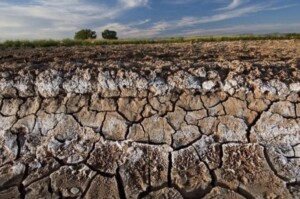A salinity assessment is frequently performed to see if the salt in the soil will affect a proposed development or when soil is being transported from one location to another.
Salt corrodes concrete and metals, as well as having an effect on plant growth.
A saline soil is one that has a high concentration of soluble salts, which inhibits plant development and/or land use.

In Australia, salinity is a serious natural resource management issue.
Salts can come from a variety of places, including the weathering of rock and soil, as well as salted water bodies.
These salts can be mobilised by surface and groundwater, causing them to accumulate in other places.
Damaged infrastructure due to corrosion of concrete, steel, bricks, and mortar, vegetation distress or dieback, and enhanced erosion potential are all effects of salty soils.
The electrical conductivity of a soil, corrected for texture, determines its salinity.
The potential for corrosion to occur on concrete or steel buildings is measured by aggressiveness.
The pH, electrical conductivity, and presence of chlorides and sulphates in soils are all used to determine soil aggressiveness.
How Can Airsafe Help You?
Airsafe has conducted salinity investigations in the past. Consultation, site inspection, texture classification, and sample recovery are all services provided by a team of contaminated land experts who are familiar with sampling methodologies and patterns.
With the exception of texture categorisation, recovered samples are analysed by an independent laboratory, ensuring that the results are unbiased.
For all salinity investigations, the details of the study, the analysis of the data, and any recommendations are given as usual.
Airsafe can also create associated management plans in order to meet legislative, regulatory, or project needs.
Need help with a Salinity Assessment? Contact Airsafe




